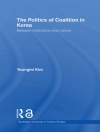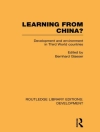This book explores the dynamics behind Romania’s relationship with the European Union from the collapse of the Ceaucescu regime in 1989, to its recent accession to the EU in 2007. As a completely up-to-date and detailed study, it identifies key developments in EU-Romania relations, as well as the challenges Romania faced in its efforts move from the margins of the European integration to EU membership. In so doing, the analysis contributes to wider debates about the dynamics underpinning EU enlargement. Moreover, the book reveals the consequences and limits of Europeanization.
Romania and the European Union analyses:
- the impact of integration on the consolidation of democracy in Romania;
- the country’s economic development, in accordance with the EU’s Copenhagen criterion — the need for acceding states to possess a ‘functioning market economy’;
- the process of macroeconomic reform;
- the reform of its public administration;
- the country’s efforts in implementing the EU’s acquis in the areas of justice and home affairs –a focal point in the accession negotiations given Romania’s geographical location, and its vulnerability as a major transit point for illegal migration and trafficking into the EU – and securing its external borders;
- the EU’s role in promoting reform as well as the limits of EU influence
- the obstacles Romania has had to overcome in meeting the demanding pre-requisites of accession to the EU.
This book identifies the EU’s role in promoting reform, but equally the limits of EU influence. It reveals the obstacles Romania has had to overcome in meeting the demanding pre-requisites of accession to the EU.












